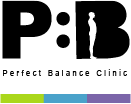This article examines the role of the Rotator Cuff Muscles and how they are affected by pathology or injury affecting the 4 Rotator Cuff Muscles. If you have been recently diagnosed with Rotator Cuff Muscle problems then this article will be useful for you.
What are the Rotator Cuff Muscles?
The rotator cuff muscles are found in the shoulder (Glenohumeral joint) and they have two jobs one is to stabilise the ball and socket joint where the humerus attaches to the scapular (shoulder blade). The second is to be involved in the movement.
There are two main joints in the shoulder the glenohumeral joint and the acromioclavicular joint. The acromioclavicular joint is between the scapular and the collarbone (clavicle).
The rotator cuff muscles are 4 deep muscles called the supraspinatus, infraspinatus, subscapularis, and teres minor muscles. These muscles work together and are intertwined at the tendon junction (Brand, 2008) and involved in all shoulder movements.
Subscapularis attaches to the front of the scapular while the other 3 rotator cuff muscles attach to the back of the scapular and then join at the humeral head. These muscles provide internal and external rotation and functional stability on all shoulder movements. (Lewis et al, 2015)
It is believed that shoulder flexion causes more activation of the posterior rotator cuff and shoulder extension has more activation of the anterior rotator cuff muscles.
Suggesting that the rotator cuff muscles also play a big part in counterbalancing the humeral head during movement when the other more superficial muscles involved in shoulder flexion, abduction, and extension.
What is a Rotator Cuff Tendinopathy?
Tendinopathy describes damage and or degeneration to the structure of the tendon (tendons attach the muscle to the bone). This can be caused by accumulation and degeneration over time or overuse and overloading the tendon, poor shoulder biomechanics, posture, or injury.
Pain can occur with overhead activities, throwing, reaching up to cupboards, or reaching behind your back. Pain can be in a painful arc presentation between 70-120 degrees of moving your arm out to the side and over your head. A catching type of pain is described during the movement.
What treatment options are available for Rotator Cuff Muscles?
Treatment includes:
- Targeted exercises to restore the strength and stability of the rotator cuff muscles and scapular muscles that stabilise the shoulder.
- Activity modification.
- Avoiding aggravating factors.
- Manual treatment from a physiotherapist to correct posture and muscle balance around the shoulder to prevent further strain on the tendon while it recovers.
If you feel this describes your shoulder pain and you would like further advice contact our reception team or visit one of our clinics to book a consultation.
Download our exclusive free E-Book
We have created an E-Book that explains everything you need to know about Physiotherapy. Click here to download your copy now – it’s FREE.
For more information about Rotator cuff muscles
This article was written by our team of specialist therapists at Perfect Balance Clinic. If you would like more specific advice about how our team can help you with this condition or symptoms you may be having, please complete the contact form below and one of the team will get back to you shortly.
References
Brand. R. (2008). Surgical Anatomy of the Rotator Cuff and the Natural History of Degenerative Periarthritis. Clinical Orthopedics and related research. 466 (3):543-551. Brukner and Khan, (2009). Clinical Sport Medicine. (3rd Ed). McGraw-Hill.
LEWIS, J., MCCREESH, K., JEAN-S?BASTIEN ROY, KAREN GINN, (2015). Rotator tendinopathy: Navigating the diagnosis-management conundrum. Journal of Orthopaedic m and sports physical therapy. 45: 11, 923-937.





